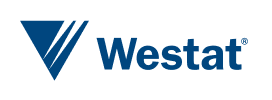This website uses cookies so that we can provide you with the best user experience possible. Cookie information is stored in your browser and performs functions such as recognizing you when you return to our website and helping our team to understand which sections of the website you find most interesting and useful.
What is the cost of a healthy diet?
Linking USDA nutrient and food composition data to retail sales data

Challenge
The U.S. Department of Agriculture (USDA) uses food purchase data for a number of research and policy initiatives, and also produces databases of the nutrient composition of foods.
In order to associate sales data with nutrient data, USDA needs to link the 2 data sources. These links enable research on healthy food purchases and estimation of the costs of foods reported by participants in What We Eat in America, the dietary intake component of the National Health and Nutrition Examination Survey (NHANES). The challenge is to link 2 data sources that use different terminology to describe foods.
Solution
Westat developed food category-specific tables linking text terms used in the 2 databases and an algorithm to identify the most likely one-to-one match between the sales data item and a nutrient data item.
Westat nutritionists reviewed the matches for accuracy and manually assigned matches when an automated match failed. They also developed a database of yield factors to convert the weight of the food as purchased (e.g., raw chicken with bones) to the weight of the food in the nutrient database (e.g., raw chicken without bones).
Westat also developed procedures to estimate national average prices for each food reported in What We Eat in America.
Results
The links between sales and nutrient data and the methods for developing national average prices allowed USDA to update the cost of the U.S. Thrifty Food Plan, the basis for the Supplemental Nutrition Assistance Program (SNAP) benefits. The use of the linked data resulted in increased benefits for SNAP recipients.
USDA plans to use the linked data to further analyze food purchases and will also make the linked data available to other government and private researchers, enabling wide-ranging research on food costs and diet quality.
Learn more:
USDA Modernizes the Thrifty Food Plan, Updates SNAP Benefits | Food and Nutrition Service
Focus Areas
Dietary Assessment Food and Nutrition Social ServicesCapabilities
Data Collection Data Harmonization and Data LinkageSenior Expert Contact

Thea Palmer Zimmerman
Principal Research Associate
-
Perspective
Teacher Apprenticeships Strengthen the WorkforceJuly 2024
Many state education agencies (SEAs) are addressing teacher shortages by creating and expanding alternative paths to the teaching profession. One fast-growing option is teacher apprenticeships,…
-
Expert Interview
Passport to Careers: Aiding Foster and Homeless Young AdultsJuly 2024
The Passport to Careers program in Washington State supports former foster youth and homeless youth unaccompanied by a parent or guardian in achieving their college…
-
Perspective
Highlights of Westat at AAPOR 2024May 2024
We’ve returned from the 79th Annual American Association for Public Opinion Research (AAPOR) Conference, held May 15-17 in Atlanta, where we caught up with colleagues…



